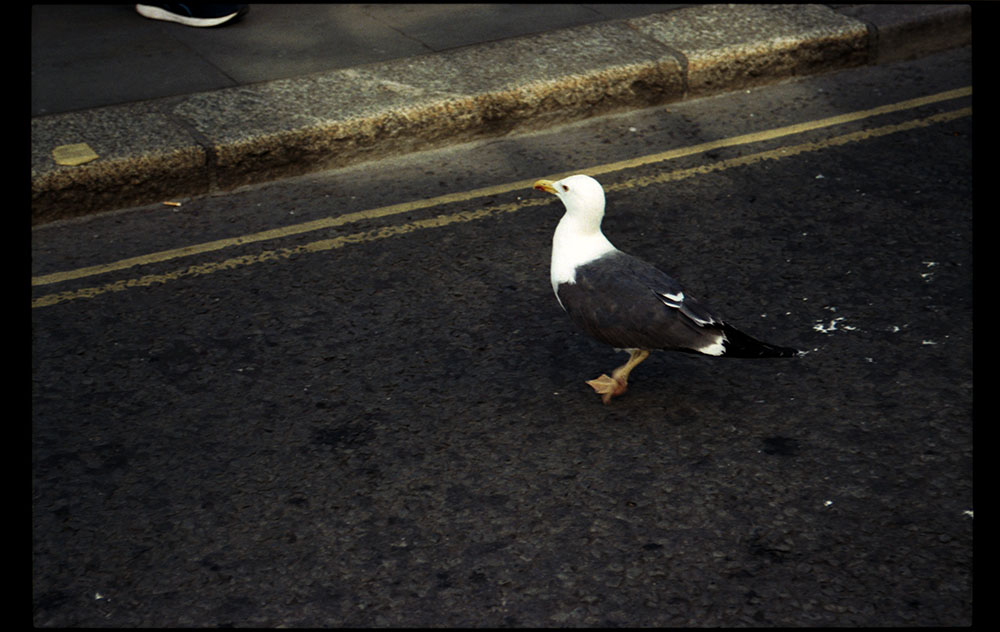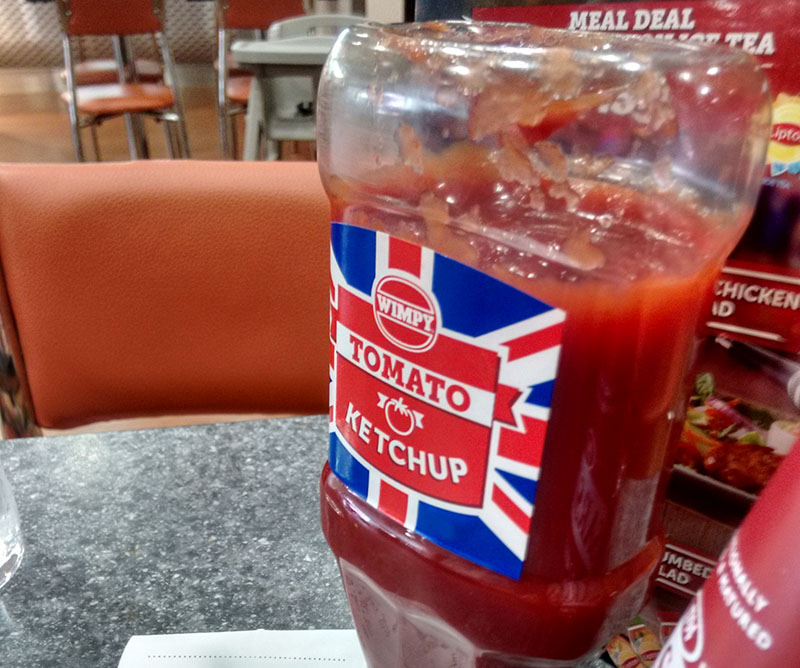Let's have a look at the Nikon 28-85mm f/3.5-4.5, a standard full-frame zoom lens from the dawn of Nikon's autofocus era. It was launched back in 1986 as part of the first wave of Nikon AF lenses and remained on sale until the end of the 1990s. Despite being over thirty years old it's pretty good.
Does Benedict Cumberbatch sit at home and write about us? Is he disappointed with us? Jesus was disappointed with us. But he loved us all the same, and I like to think that Benedict Cumberbatch loves us as well, including me.
In the last post I looked at the Canon 28-80mm f/3.5-5.6, which occupied a similar niche in Canon's product range albeit that it was released a few years after Nikon's lens. They were both moderately expensive, slightly upmarket standard zooms that were eventually displaced by much cheaper budget-priced lenses. On the used market they make for an interesting proposition because they're slightly better than the lenses that replaced them. Of the two the Nikon lens is better on an optical level, but it's larger and weighs half as much again as the Canon lens so I haven't used it nearly as often.
The 28-85mm is the chunky fellow on the right. Shown here extended to 28mm. The lens is most compact at 85mm. As mentioned in the text, shiny black plastic wasn't very attractive even in the 1980s.
All of these images were shot with a Nikon F-50 - not an exceptional camera by any means, but blessed with Nikon's matrix metering system, which is consistently good.
It resembles the manual focus ring on Canon's 50mm f/1.8 "nifty fifty". It's connected directly to the barrel of the lens rather than being geared, and it's actually easier to manually focus the lens by turning the front element instead. Nikon's generation one house style didn't last very long - from 1987 onwards the company replaced the plastic manual focus ring with a bumpy rubber grip instead. Traces of the original look survived into the AF-D era but were mostly wiped out in the switch to AF-G lenses, but e.g. Nikon's modern 20mm f/2.8 and 50mm f/1.8 prime lenses still have the old-fashioned distance scale.
I'm not a Nikon person, but my impression is that even Nikon people aren't particularly enamoured of the company's early autofocus lenses. Optically the designs were carried on from their AI-S manual focus predecessors, but housed in plastic bodies, although in a few cases the new lenses were based on the earlier, budget-priced Series E range instead. A couple of them have an interesting specification that wasn't duplicated by later lenses (the constant-aperture 70-210mm f/4 and the 55mm f/2.8 Micro, which was replaced within a few years by a 60mm model) but on the whole they don't stand out nowadays and felt a bit cheap at the time.
In the shot a few paragraphs up the page my 28-85mm is mounted on a Nikon F-50, which isn't period-correct. The F-50 is a budget SLR from the mid-1990s; the 28-85mm was launched a decade earlier, alongside the F-501 / N2020. It's a screw-drive lens driven by a motor in the camera, and at least on an F-50 the autofocus is buzzy and slow. I'm wary of passing judgement on the autofocus because it may well be lighting-fast on a Nikon F4. I can however understand why Canon's USM was such a big deal at the time; the difference between the fast, almost-silent swush of USM and Nikon's whirry gears is stark.
In the previous article I tried to visit Wimpy, but the branch I chose was closed. I am not dissuaded that easily. "Brave heart, Tegan". So I visited Basingstoke, which is essentially a train interchange connected to a shopping mall that backs onto a commuter town.
I have several ambitions in life that I will never achieve. I will never photograph the ship-breaking yards of Chittagong, or have lunch at Kai Tak, or document the radioactive wastes of Pripyat, or stride the landscape of Greenland etc. They are forever beyond my grasp. Eventually Wimpy will be beyond my grasp as well, but not this day. Not this day!
I feel incredibly self-conscious taking pictures of food, but I did manage to take this snap of a Wimpy ketchup bottle:
Somewhere in Britain there's a factory that produces Wimpy ketchup bottles. I picture a worn-down building on an industrial estate next to a train line somewhere up north, perhaps in Huddersfield or Doncaster. The employees have made Wimpy ketchup bottles all their lives. Fifty years ago their business boomed, but over the last few decades it has been in constant decline, but they cling on, like the last few manual typewriter repair technicians in India, or the steam train engineers of China.
They are desperate now. The older employees are nearing retirement. They feel sorry for the younger employees, who will be unemployed when the factory closes. The youngsters will have to move to a different town, and in the long run Huddersfield - or Doncaster, wherever - will become a city of old people just waiting to die. The playgrounds will stand empty. There will be no life, the barest minimum of movement. The city will experience a fate akin to the heat death of the universe, hanging on in quiet desperation until the final subatomic particle undergoes a quantum fluctuation into another universe entirely, leaving blank nothingness for all eternity.
For now Wimpy survives. I have to say that the burger was fine, the fries not so good, the general ambience decent enough. I'm old enough to have visited Wimpy when it was still a "thing", and although I don't have much memory for food the burger tasted as I remembered. The problem is that the prices are higher than McDonalds and Burger King, and even though the quality seems better and Wimpy has table service, the same is true of Wetherspoons, but Wetherspoons has beer and feels like a proper restaurant. The odd thing is that Nando's has essentially the same mixture of qualities but whereas Wimpy is in decline, Nando's thrives, perhaps because Nando's has a distinctive USP - a poor man's imitation of high-class dining - whereas Wimpy has a muddled message. Is it nostalgic? Classy? A party destination? Throwback to the pre-Beatles era? The home of good food, or what?
But enough of this. What's the 28-85mm like on an optical level? Wide open at 28mm it has very mild vignetting:
That was shot with a Kodak DCS Pro 14n, a 14 megapixel full-frame digital SLR from the early 2000s. It was in theory Nikon's first-ever FX camera, albeit that the sensor and electronics were provided by Kodak. It illustrates one of the 14n's many problems. Notice how the sky is purple on the left and green on the right? The 14n and its heirs had a feature that corrected colour casts across the image, which Kodak argued was an inherent quality of SLR lenses. However the problem seems to have affected no other manufacturer of full-frame cameras before or since, which suggests to me that there was something off with Kodak's sensor. The camera's lens optimisation database includes an entry for the 28-85mm but no amount of fiddling with it actually did anything.
Resolution-wise the 28-85mm is sharp in the middle wide open at 28mm, perhaps fractionally better at f/8, improves no more at f/11. The 14n doesn't have an anti-aliasing filter and you can see some moire effects in the text on the street sign:
Out towards the edge it's soft but not awful wide open, again improving at f/8 but not any more at f/11, with some obvious red-blue CA:
In the extreme corners the image is again soft-but-okay wide open, and becomes actually pretty good at f/8 and f/11, again with minor CA:
Compare this with the same shot taken with the Canon 28-80mm, which is soft at 28mm in a way that can't easily be fixed with Photoshop and never gets particularly sharp even stopped down (shot with a 21mp 5D MkII):
At 85mm the lens isn't quite as good. Wide open it's soft, with a glow on highlight edges, but again it gets better at f/8 and stays good at f/11:
Here's another example of the glow wide open, more pronounced this time:
In the corner it goes from being soft to being less-soft, peaking at f/11, but it isn't as sharp as the Canon lens:
It has to be said that unless you're splitting hairs, or perhaps shooting with a much higher-resolution camera, if you lock the 28-85mm at f/8 it's essentially sharp enough across the frame, and even wide open the results are decent. At 28mm it's very good, surprisingly so for an autofocus zoom lens from the 1980s. The build quality isn't very inspiring (the inner tube rocks back and forth slightly) but, again, this lens has survived for thirty years, far longer than I imagine Nikon expected when they built the thing.
As was the fashion back then the lens has a special macro gear that activates at 28mm. You twist the lens to 28mm, push a button, and continue to twist it beyond 28mm, at which point it starts manually focusing in a macro range. In olden times standard zooms tended to have quite long minimum focus distances so a special macro clutch was often added to compensate. The 28-85mm's minimum focus distance is 0.8m, which is further than modern lenses but perfectly usable, so the macro mode feels superfluous.
What happened to the 28-85mm? There's very little about it on the internet nowadays and Google Books has nothing. It seems to have undergone the same kind of evolution as the Canon 28-80mm - at first displaced by a direct replacement (in this case the AF 28-70mm f/3.5-4.5), and then further overwhelmed by a mixture of ultra-cheap plastic-mount standard zooms and more capable, slightly more professional models on the other. Its spiritual successor was the highly-regarded 28-105mm f/3.5-4.5, which I have used very briefly; the 28-105mm was sharper at all focal lengths and focused much closer and is generally a better lens. I imagine its modern equivalent is the 24-85mm f/3.5-4.5 VR, the end.






















